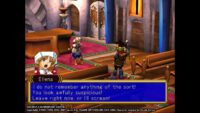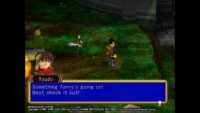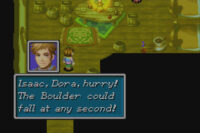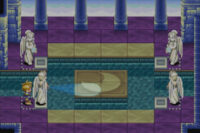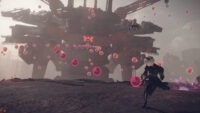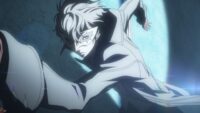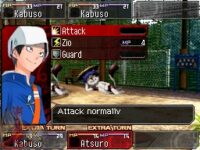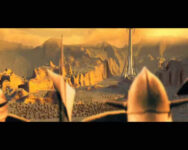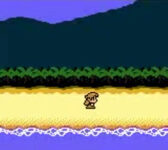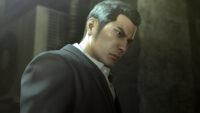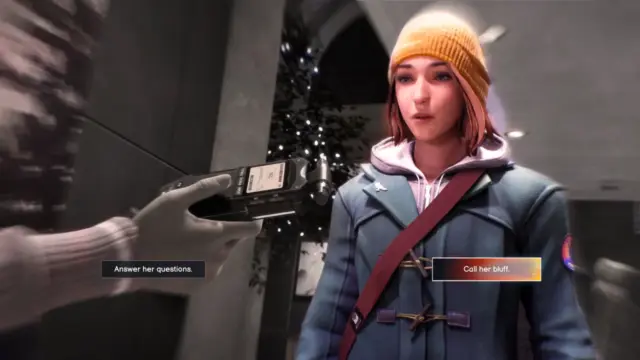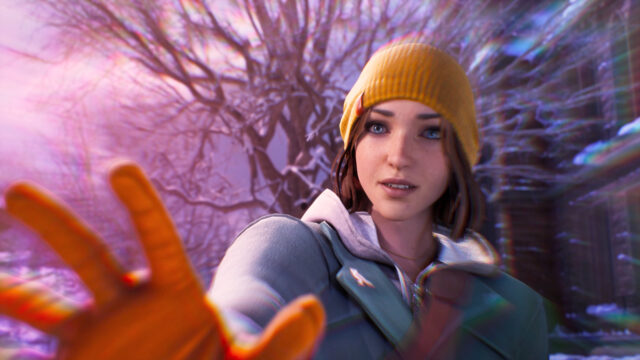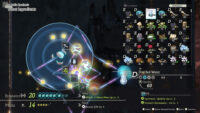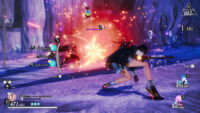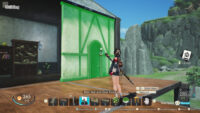Welcome Gamers!
This is the site for all things Friday Night Gaming!
News brought to you by Roleplaying Tips, RPGamer
RPGamer’s Favourite RPG Intros, Part 2
While much has been said about the longevity of many modern-day RPGs, it always helps when a game manages to suck players in from its outset. While RPGs have always had a great amount of runtime for their value, there’s no underestimating the value of starting with a bang and giving players that reason to stick around. The most successful ones have often earned recommendations that need not come with the caveat they get good after so many hours, because those opening hours do such a good job enrapturing players and demonstrating what the game is all about.
In our celebration, we have asked our staff to choose some of their favourite RPG intros from across the years. We have deliberately kept the definition of “intro” to be as vague as possible, whether it just consists of a powerful opening movie or an introduction to set the scene or a substantial first chapter. Given the full amount of games included in our celebration, we have split it into two parts based on alphabetical order, with the first part available here.
Skip to Game:
- Grandia II
- Golden Sun
- NieR: Automata
- Persona 5
- Shin Megami Tensei V
- Shin Megami Tensei: Devil Survivor
- SpellForce: Order of Dawn
- Tales of Symphonia: Dawn of the New World
- The Legend of Zelda: Link’s Awakening
- Wild ARMs
- Xenoblade Chronicles
- Yakuza 0
- More available in Part 1!
Grandia II
While I could do a recap of everything that happens in the opening of Grandia II — if you aren’t going to play it, I still highly recommend going and watching a video — what makes it one of the top intros for me is how quickly it establishes the world and the protagonists with minimal dialogue necessary. The opening cinematic relies on solid imagery to tell the planet’s tale. This imagery tells the story of a thriving civilization under the light of Granas, which is plunged into chaos when the darkness of Valmar appears. As the epic battle between these two gods resolves, the world is permanently scarred, and we’re treated to the background music’s climax as the title card is revealed.
This opening cinematic follows in the footsteps of many great films by providing clues and trusting the player is smart enough to piece them together. Within a minute and some change, you know all you need to know about the history of the world to get invested in the story. Following this cinematic, the intro turns its attention to the present day, providing a glimpse into the core values of the protagonist, Ryudo, and a very important party member, Elena.
We first meet Elena as she parlays with a group of people thanking her profusely who she has just finished helping out. No money is exchanged, indicating that she is not doing it for personal gain. We also learn she is a caring individual through her interactions with the child present. Elena’s core values, which are constantly put to the test throughout the game, are quickly established. Ryudo, on the other hand, is a foil to Elena early on. Our first encounter with Ryudo includes hanging dangerously from a cliff above a group of baddies, dispatching one of said baddies, cussing at his bird partner Skye as Skye is actively rescuing him, and putting up with a jerk of a client. These moments not only establish Ryudo as competent and strong, but also as a bit of an arrogant jerk.
Throughout the narrative, these establishing characteristics play a huge part in character development. Ryudo, in particular, is completely unrecognizable by the journey’s end. Without this strong intro establishing him early on as not that likable of a person, the impact of his hero’s journey would be less effective. Overall, it’s stood out as one of my all-time favorite openings for any RPG, especially now that so many rely on hour-long cutscenes and tutorials to establish the world. — Andron Smith
Golden Sun
This is certainly a pick based on nostalgia. A traumatic event hitting the hero’s beloved home town has long been an RPG trope, but that’s because it’s effective at giving players the impetus to set on their journey, be it of revenge, rescue, or other goals. As a newcomer to RPGs, Golden Sun‘s use of it was really what sucked me into the game and seeing where the story and adventure went, eventually helping to cement my future love of the genre.
Golden Sun is more than comfortable enough with the trope to use it twice, although it has enough variance between the events, using the first to effectively set up the second. The first event striking the village of Vale is a rockslide from Mt. Aleph that ends up seemingly killing protagonist Isaac’s father as well as both the parents and brother of his childhood friend Jenna, and and is revealed to be the result of a group trying to access the sanctum on the mountain. It’s a fairly simple chain of events, but the game does a great job with its limited resources of evoking the sense of danger and emotion thanks to the use of minimal bass-driven music outside of combat, where it is replaced with a heavy focus on sound effects of the rain, thunder, and eventual rockfall as well as the text box sounds that help convey the sense of panic.
Three years later, Isaac, Jenna, and his other childhood friend Garet get caught up in another event as they climb Mt. Aleph with their teacher Kraden. When reaching the sanctum that lies within, they discover that Felix is still alive and has seemingly partnered with those responsible for causing the events of three years ago. The events result in Jenna and Kraden being taken by Felix and his group, who also obtain three important items needed to unseal the full power of alchemy in the world. As Mt. Aleph erupts, Isaac and Garet are saved by a being called the Wise One, who tasks them with stopping the abductors from using the items on the lighthouses found around the world.
While the first part offers a quick introduction to the combat, the second part of the opening properly fleshes out the game’s puzzle-solving elements and magic system known as Psynergy. While not giving players huge explanations of all the systems and lore behind the world, Golden Sun nonetheless does a fine job introducing the various parts of the game. From the story to the combat to the puzzle-based exploration, players are involved in each of them, learning very much by doing rather than being given piles of text to read through, and that level of interactivity is what makes for such a strong opening. — Alex Fuller
NieR: Automata
Prologue demos are increasingly common in the RPG space, and they are incredibly useful for consumers to gauge their interest in a particular game, especially one that might end up consuming upwards of 30 hours of their time. NieR Automata’s demo covers the prologue of the game, and boy is it a magnificent prologue.
The prologue follows protagonist 2B as she descends to earth on a mission, eventually becoming the lone ground operative while her partner, 9S, mans the skies. Fighting against the machine lifeforms, PlatinumGames’s mastery of fast-paced action combat is put on full display, with 2B’s quick movement and satisfying combos immediately catching the player’s attention. The dialogue between 2B and 9S is fun, sprinkling a few allusions to future reveals without giving them away or being too obvious.
Another strength of the prologue is the variety it offers, opening on a bullet-hell section, before pivoting into the game’s primary method of play, the 3D action. The only piece missing is the hacking mini-game, which makes for a fun surprise later in the game. Ultimately, though, the true highlight of NieR: Automata’s prologue is the boss at the end. A hulking mech with buzz saws for hands, the titanic figure stands in stark contrast to the human-sized 2B and 9S. Starting out as a fairly standard affair where the player dodges punishing attacks, the battle is interrupted by a brief story moment, and eventually 2B takes to the skies with a flight unit, transitioning to gameplay resembling the bullet-hell section earlier in the demo. However, at the very end, 9S manages to hack the enemy’s arm, rip it off, and grant 2B the ability to hit the giant mech with its own arm. It was at this moment during my playthrough of the demo that I actually cried out “I love videogames!” Despite how gloomy and thoughtful the demo had been up to that point, this unabashedly cheesy, ridiculous, and hype-inducing moment sticks in my head as the reason I decided to purchase what has since become my favorite game. — Ezra Kinnell
Persona 5
Highly acclaimed Persona 5 starts strong with a flashy scene where the Phantom Thieves, the gang of heroes, are on a mission. The heroes, with their captivating outfits, rapidly confirm that they are masters of their trade as they infiltrate a casino while an upbeat funky tune plays in the background. Players are then introduced to combat and exploration, two of the main mechanics inside dungeons, giving players a taste of the gameplay. This initial setting instantly takes hype to a high level, and the first scene ends with a drastic turn that invites players to learn both what happens next and how the Phantom Thieves got to that point.
The strong opening section continues as players witness the beginnings of the Phantom Thieves. After being introduced to the protagonist’s unfair current lot in life and briefly exploring the city, the protagonist is taken to the mysterious Metaverse, along with a new ally. They find themselves trapped inside a castle, yet they are able to unleash the power of their Personas to free themselves. They are also joined by the very likable character called Mona who serves as a teacher and a guide. Inside this Palace, they find alternative versions of people from their world. The section does a great job introducing the injustices for players to fight against, and the dungeon is arguably one of the best of the whole game, succeeding at grasping the players’ attention and making them connect with the motivations and emotions of the main characters. — Luis Mauricio
Shin Megami Tensei V (+ Vengeance)
Shin Megami Tensei V: Vengeance has two story campaigns in the brand-new Canon of Vengeance and the original 2021 release’s Canon of Creation. Both routes have major similarities in the opening hours, with the Canon of Vengeance only changing some minor elements. This makes for a similar initial experience across both routes, which is ultimately a good thing because the opening hours of Shin Megami Tensei V are some of the best the game has to offer.
The main character is a regular high-school student who ends up in a greatly changed world due to a chaotic events, where they have to fuse with Aogami in order to fight off demons and stay alive. Shortly after, the player is let loose on the first area, fighting and recruiting demons, exploring for treasure, and so much more. Shin Megami Tensei V’s opening area of the apocalyptic land of Da’at, Minato, makes an incredible argument for being the best in the game. The atmosphere combines with the soundtrack to make the player feel truly stranded and feel like they are fighting for their life against the harsh underworld.
The early boss fights do an amazing job of teaching the player how to navigate fights against tougher enemies. Hydra rewards paying attention to what kinds of demons the player can recruit and exploiting weaknesses, while Naamah, exclusive to the Canon of Vengeance, is a good wakeup call to those who played the original release that the new content will require new strategies and ways of tackling the bosses. Finally, Nuwa serves as a lesson in humility, as the player is likely to die a lot to her on their first playthrough. It may not the friendliest as intros go, but Shin Megami Tensei V is all about amping up players for the challenges ahead. — Ezra Kinnell
Shin Megami Tensei: Devil Survivor
Shin Megami Tensei: Devil Survivor makes a strong immediate impression thanks to a marvellous presentation that owes a lot to a soundtrack composed by Takami Asano. While a tune with a strong rock influence is playing out, an enigmatic individual, whose identity isn’t revealed at this point, reflects on humanity’s tumultuous history before promising the world will soon endure a great hardship. This solemn speech not only builds the expectation of a story with great stakes, but also raises many questions, feeding the curiosity of the player that has yet to discover anything about the game’s plot.
Shin Megami Tensei: Devil Survivor evokes its title in the first few minutes of the game. The first issue the protagonist and his friends face happens in a very unexpected way, shattering the sense of security they were taking for granted at the start of the story. While there are many reasons for the cast to believe the situation will improve very soon, incidents occur one after another, putting them in situations where they have to fight for their lives. By this point, players will have realized the “survivor” in the title isn’t there for show.
Ultimately, one of the things that makes the opening of Shin Megami Tensei: Devil Survivor so exquisite is how it manages to make the player worry for the characters instead of why the world is progressively sinking into chaos. The difficulty of certain battles and hints of sure deaths for the endearing characters no matter their desperate endeavour create a powerful incentive to keep playing and finding out whether they will be able to survive to the end. — Mohamed Lamine Coulibaly
SpellForce: Order of Dawn
Back in the older days, many games relied on full CGI opening intros to entice the player, often doubling up as trailers. One of these games that drew me under the force of its spell was SpellForce: Order of Dawn. Made by the little known German studio Phenomic Game Development something just hit different about this little game. If someone were to ask me to point to a CGI introduction that draws you in with action, mystery, and stellar presentation in my native German language, I’d say look no further.
While pretty similar to the English, I still prefer the German version. Differing mostly between the English wise-sounding male narrator and German ethereal-sounding woman, the former also alters the presentation of some voice lines for hilarious effect. The camera starts flying through a cavern hearing about the discovery of the “Allfire”, the secret of the “Convocation”, and imparting a sense of power behind them. The subsequent reveal of the thirteen mages, death, and armies, shows how quickly things escalated and that players are being thrown into their aftermath. The opening offers a great premise with little kernels to see if one will bite, then drops more when the player is confronted with two armies facing off in front of a nearby tower. Seeing the two armies waiting hit a young me with the peak of anticipation. I wanted to see what happens next.
However, where the video shows its hand is when it cuts to the inside of the tower where a dark magician watches the battlefield while a clothed-in-white magician walks behind him with the words “the convocation is a lie”. This line is burned into my memory to this day. This is one of the moments where the strict and loud German and calm English performances of the phrase differ. The two mages argue like two mighty animals looking for weak spots. Then suddenly starting a fight over this convocation while the armies start charging at each other.
At this point, I already wanted the game, but the intro was not yet done. Fighting breaks out but then the ground splits and slowly breaks apart, splintering the armies into small skirmishes over hot magma. Rocks get spewn high in the air and one strikes the tower. The two mages feel the towers’ integrity fail, and we suddenly have an aerial magician fight I didn’t see coming that upped the finality of the situation. It results in the wildest combat ’90s CGI probably could produce, underpinned by orchestral music and chanting, ending with both mages jumping off quickly falling pieces of floor diving for a book we still don’t know anything about. To this day, this intro gives me warm feelings and excitement when hearing the name of the SpellForce IP. I do miss games having fully CGI trailers over in-engine cutscenes, but I understand why they went away and I hope at least some people will look up this intro and others from the past to see what moved my generation’s hearts and minds. — Benedikt Geierhofer
Tales of Symphonia: Dawn of the New World
Tales of Symphonia: Dawn of the New World begins much like the first game, with narration about how the Giant Kharlan Tree, the source of mana in the world, withered and died. The narration is even done by Kratos Aurion, one of the party members in the first game. It gives a very brief synopsis of the ending of Tales of Symphonia before stating that “the world was at the dawn of a bright new era, or so it seemed…” Following this is a scene of the city of Palmacosta, one of the largest in Sylvarant, engulfed in flames. Lloyd Irving, the main protagonist of the first game, then walks across a rooftop, looking uncharacteristically ominous against the backdrop of the raging fire.
Next, a new character, a long-haired girl carrying a large red marble-like object, is seen running from masked pursuers. The narration continues, explaining how this new world is embroiled in a conflict between two civilizations and strange and drastic climate shifts. A man and a woman are then seen running through the streets, telling someone else off-screen named Emil that they need to get away or Lloyd will kill them. Lloyd then appears behind them and cuts both of them down. Afterward, the long-haired girl is cornered by her pursuers and she asks a being called Ratatosk for help. The orb brightly flashes and the next thing she knows, she is on the ground, the strange men gone, and she now has a red glowing spot on her forehead. A boy asks if she’s all right. She asks the boy if he saved her, but he only says he has to go and walks away. The boy then comes across the man and woman from before. The woman comes to for a moment, but she doesn’t have much time to live. She barely recognizes the boy as her son Emil, as she can’t see his face. She tells him to go to his aunt that lives in Luin before she dies. Emil seems stunned at first, but he cries out “Mom!” as the screen fades to black. It then opens to the title screen for chapter one.
Dawn of the New World’s beginning cutscene presents a game that is familiar yet very different from the first game. Despite the seemingly happy ending of the original Tales of Symphonia, the sequel shows that the world is in much turmoil. Seeing Palmacosta on fire as the narrator talks about how the more technologically advanced civilization is oppressing the other and natural disasters abound is a sharp contrast to not only the hopeful ending of the first game but its more subdued opening as well. With the city awash in flames, the sky dark with smoke, is likely to stun players and make them feel uneasy. What is more shocking, though, is seeing what Lloyd is doing. Those who know Lloyd from the first game are likely baffled by his cold and sinister demeanor and villainous behavior. Did he start the fire, or help to start it? Why did he kill those people? How many has he murdered already? Has he been brainwashed? Has something terrible happened to him to make him this way? So many questions, and it’s only the game’s beginning. This grim opening sequence with its dark version of Lloyd is sure leave an impression that lasts long after finishing the game.
There is also some very subtle foreshadowing involving Emil. At first glance, Emil’s behavior is to be expected. He is speechless for several moments upon seeing his dead or dying parents. However, was he just wandering around before? Why didn’t he answer any of the girl’s questions? Does he take a little too long to realize what happened to his parents? It is also rather convenient that his mother can’t see his face. These little details won’t matter until much later in the game, but the repercussions are striking. It’s a stroke of genius once certain revelations come to light. All in all, the opening to Dawn of the New World, with its sharp contrast to the first game’s opening and seemingly drastic changes to Lloyd, will likely stay with the player for a long time. — Cassandra Ramos
The Legend of Zelda: Link’s Awakening
I have played a lot of games over the years, and that means a lot of opening scenes. Short, long, loud, quiet, and everything in-between, but some shall always have a space in my head and heart. The one that first came to mind for this feature was The Legend of Zelda: Link’s Awakening. It was an earlier time, when my main game platform was the Game Boy, and most intros were either long scrawls of text against a backdrop of decent chiptunes, or else so minimalist that they told nothing at all. And then there was Link’s Awakening with its opening cinematic, like nothing I’d ever seen before in sprite animation.
There were no words, but still it gave exactly what a young player (i.e., me) needed to understand what was going on at the start of the game, and then ended on a perfect shot of Mt. Koholint with its giant egg that provided a mystery to wonder at. In just under 50 seconds, it set the scene in a way that no other game I’d seen had ever done before, and for that it shall always be remembered. — Michael Baker
Wild ARMs
To this day, I still remember the first time I inserted the Wild ARMs disk into the PlayStation and turned the power on. I was welcomed with a beautiful animation that told me of a great story to come. Showing an image of the world and our three main characters, separately at first but then coming together, I was in awe as I was watching it. I must also mention the music that accompanied it, and to this day every time I hear it I get chills and can only smile along. Together they get me ready to embark on a great journey.
After that, I was introduced to another part of the story. In the dead of a winter night, a tragic story happens before the viewer’s eye, as a number of people are killed by a demon that nobody believes truly exists, while protecting a huge cocoon. I think it provided a perfect introduction to this world, as it gives a swift reveal of the nature of the world and dispelling the notion of embarking upon a lighthearted story. — Christian Dextraze
Xenoblade Chronicles
The first time I watched the opening of Xenoblade Chronicles was via its Definitive Edition in 2020. I was a fan of the Xenosaga series, but I had no idea what I was getting myself into with this game. Right from the start, the intense battle atop the colossal Bionis pulled me in. The setting felt otherworldly and awe-inspiring, setting the stage for everything that would follow. Shulk’s opening narration about the creation myth of the Bionis and Mechonis gave me a perfect introduction to the game’s world, providing just enough backstory to make sense of what was happening without feeling heavy-handed. The way it naturally fit into the narrative structure impressed me, and I remember being struck by how seamlessly the game introduced its lore without forcing it on the player.
The camera work during the opening sequence stood out to me, too. Each sweeping shot of the vast landscape gave me glimpses of future locations, and it was exciting knowing that one day I’d be able to explore those areas myself. The world felt huge, interconnected, and alive in a way that few games managed to achieve. And as the story progressed through its first chapters, it didn’t take long for the emotional stakes to hit. The scenes that set Shulk on his journey were gut-wrenching, and Adam Howden’s voice acting really made those moments land. I could feel the raw emotion in his delivery, and it gave me a taste of just how powerful the narrative would become as the game unfolded.
Looking back, the opening not only hooked me but also served as a perfect bridge from the broader Xeno series, especially since I came in as a Xenosaga fan. It was clear to me that Monolith Soft had succeeded in continuing the legacy that began with Xenogears. I hadn’t expected this game to resonate with me as deeply as it did, but from that first battle on Bionis, I knew I was in for something special. The combination of stunning visuals, emotional depth, and narrative weight made Xenoblade Chronicles an unforgettable experience, and it’s an intro and game that has stayed with me ever since. — Jervon Perkins
Yakuza 0
I love the fact that we live in a world where the Yakuza series isn’t just known to a select few insiders in the west anymore, but is a staple that continues to be celebrated for its amazing characters, engrossing world, and storytelling prowess. Its ever-evolving tale, primarily focused on Kazuma Kiryu, shows no signs of ending anytime soon, but even in a series filled to the brim with memorable moments and over-the-top personalities, one stands apart from all the others.
By the time Yakuza 0 released in 2015, we’d already seen five previous mainline entries of Kazuma Kiryu’s antics. Nonetheless, Zero became somewhat of an entry point for new players, being a prequel to the rest and set well before the events of the original game. Every player can form their own opinion on the best order to experience the games, but for me Zero served as a gateway game that introduced me to Kamurocho and the Tojo Clan. I strongly argue starting here plants the proper seeds for many little moments of the next five games to hit in a way they otherwise wouldn’t, from Nishiki’s tragic relationship with Kiryu to the genesis and evolution of Goro Majima, the Mad Dog of Shimano himself. In Yakuza 0, it’s Majima especially who receives a character arc that’s so surprising and of such depth that you’ll never look at him the same way again during his many subsequent appearances in the franchise. It’s for this reason, and particularly the opening minutes of its second chapter, that Zero earns its status as an amazing game in and of itself and the perfect intro to the greater series as a whole.
Like Kamurocho, the Sotenbori district values its nightlife, and nowhere is that more true than in the Grand Cabaret where “the customer is king”. But when an inebriated patron starts to get a little too hands-on with his hostess, the other customers begin to take note of the commotion and whispers start making the rounds that a certain “he” will take care of it and that there’s no need to worry as long as we can rely on “him”. It doesn’t take long until we get to see who they’re all waiting for, as a pair of shiny steel-toed dress shoes approaches the ruffian on the club’s main floor. Sporting a snazzy suit, ponytail, and what will prove to be a trademark eyepatch, the man identifies himself as the club’s manager, Goro Majima. What follows is an epic confrontation involving fists, an ice pick, and a bottle of wine insultingly upended all over Majima, who not only keeps his cool but continues to appeal to his assailant’s sense of humility. When it becomes clear the ruffian will not take no for an answer, Majima bids the in-house band to strike up a spirited tune to accompany the pair as they “dance”, showing us that Majima is more than capable of stifling the heated exchange without ever so much as lifting a hand in anger, a stark contrast to the impulsive man we will later get to know. Once the duel is over and the bonehead is about to be escorted off the premises, Majima drops to his knees and not only manages to save the customer’s honor but also expertly manipulates the dullard into buying the entire club a round in the bargain, all without any overt use of force.
When I first played Zero, I had no clear idea of the places the story would take me across its subsequent games. Majima himself was still a mostly unknown entity to me. But if there’s one thing his first canonical series appearance instilled in me, it’s the sheer sense of how stylish and how cunning he is, whether taking on the mantle of villain or hero in the future. As much as his character continues to grow through the rest of that game alone, this is as good an intro as the game — and, by extension, the whole series — could have hoped to receive, and the level of investment into his character it inspires is well worth it for the next several hundred hours of your gaming life. — Pascal Tekaia
We hope you enjoyed the second part of our celebration of RPG openings. Please let us know your favourite intros and be sure to check out Part 1 if you haven’t already!
The post RPGamer’s Favourite RPG Intros, Part 2 appeared first on RPGamer.
Final Fantasy XIV Mobile Announced
Square Enix has announced Final Fantasy XIV Mobile. A dedicated mobile version of MMORPG Final Fantasy XIV, Final Fantasy XIV Mobile is being developed by Tencent subsidiary LightSpeed Studios under supervision from Square Enix. Multiple playtests are planned to be held in China soon, with a global launch to follow soon after.
Full details about the game’s content have not been announced, but the media provided and mention of nine jobs implies that it will launch with the base story content from A Realm Reborn. The game will also include its Disciples of the Hand and Land gathering and crafting jobs as well as the Gold Saucer and Triple Triad.
Final Fantasy XIV is currently available on PC, Mac, PlayStation 4, PlayStation 5, and Xbox Series X|S. It originally launched for PC in 2010, but was shut down and relaunched for PC and PlayStation 3 in 2013 as A Realm Reborn, set five years after the events of the original game. The game has since received has received five expansions: Heavensward, Stormblood, Shadowbringers, Endwalker, and Dawntrail.
The post Final Fantasy XIV Mobile Announced appeared first on RPGamer.
Shiren the Wanderer: The Mystery Dungeon of Serpentcoil Island Coming to Steam This Winter
Spike Chunsoft announced that roguelike dungeon-crawler Shiren the Wanderer: The Mystery Dungeon of Serpentcoil Island will be coming to PC this winter. The game will be available on Steam alongside the Plus Pack DLC that adds two more playable characters as well as its digital soundtrack.
Known in Japan as Shiren the Wanderer 6, Shiren the Wanderer: The Mystery Dungeon of Serpentcoil Island sees Shiren and his trusted ferret companion Koppa adventure on the eponymous island, where he is joined by his friend Asuka and supported by innkeeper Suzuna. Each time players enter one of the procedurally-generated dungeons, they starts at level 1 with any gear and levels obtained being lost if they collapse during exploration. The game is currently available on Nintendo Switch; those looking to read more can check out Michael Apps’s review on its Switch release.
The post Shiren the Wanderer: The Mystery Dungeon of Serpentcoil Island Coming to Steam This Winter appeared first on RPGamer.
Adventure Corner ~ Life Is Strange: Double Exposure
Welcome to Adventure Corner, a column where members of the RPGamer staff can give their thoughts, impressions, and pseudo-reviews for various adventure titles that don’t come under our usual coverage. Adventure Corner is aimed at delivering opinions on a wide range of titles including visual novels, point-and-click adventures, investigative mysteries, and so forth.
In this edition of the column we take a look at Deck Nine’s latest addition to the Life Is Strange series, Life Is Strange: Double Exposure, which sees Max Caulfield returning to the protagonist role.
Life Is Strange: Double Exposure
(also available on PC, Xbox Series X|S, Nintendo Switch)
I was skeptical when Deck Nine announced the return of Max Caulfield as the protagonist for the new Life Is Strange. On the one hand, I was curious about Max after the events in Arcadia Bay, and on the other hand, the girl had suffered enough during the events of the original Life Is Strange. While it’s nice to be back in Max’s mind, Life Is Strange: Double Exposure is a game of mixed results overall.
In 2023, Max Caulfield finds herself as a photographer-in-residence at Caledon University. While attempting to escape the mistakes from her past, Max swears never to use her time travel powers ever again. After an evening of stargazing and drinking with her friends Moses and Safi, Max begins to feel a change in the air and her powers stirring again. When Safi goes to take a phone call, Max questions why she’s been gone so long, only to find her friend shot dead on the ground, and no sign of the culprit. Grieving the loss of Safi, Max’s powers ignite once more, only this time she can pulse between a world where Safi lives, and one where she is dead. It’s between these worlds that Max begins her investigation into Safi’s death and these new powers.
Part of the Life Is Strange series’ appeal is its storytelling. With Max being older in Double Exposure, it feels strange that she has matured enough. She behaves far too young and doesn’t really fit the role she’s in, acting far less mature than her position would demand, including being besties with all of her students. Max’s personality throughout the five episodes, though at times awkwardly charming, is at odds with her position of power at Caledon, and that lack of maturity undercuts any belief in the supposition that Max has grown since the events of the first game.
It also doesn’t help that the writing in Double Exposure is a mixed bag, and part of that comes from the story not fully knowing what direction it wants to go. The consequence of many decisions, especially the larger ones, don’t feel like they fit the situation properly. The earlier episodes are much more strongly written, with tons of great touching moments, while the latter half lacks cohesion, causing confusion and having emotional moments that don’t quite hit right. When the game is focused on Max’s grief and her struggle to connect with others, that is when the writing shines its brightest.
The new characters Max encounters lack dimension, especially compared to the strong and memorable cast of Deck Nine’s previous offering, Life Is Strange: True Colours. Safi is difficult to connect with as she is nothing but raw anger throughout the narrative, bartender Amanda is “quirky” and empathic, and Vihn exists to climb the university ladder and isn’t a nice guy. A lot of these characters have a specific trait, but all have that awkward dad humour that is prevalent throughout Double Exposure. All the characters needed a lot more fleshing out to be memorable and fully three-dimensional. There are also two romantic options in the form of Amanda and Vihn, however, Vihn has an obvious interest in another character and the story bashes the player over their head that Amanda is the best choice.
Given the game is called Double Exposure, there is duality at play both in the narrative and in the gameplay. Max will need to bounce between both worlds to gain new clues to solve Safi’s death or find information about characters and events that have occurred in the different timelines. For example, in one timeline the player learns that one of the school’s professors, Lucas Colmenero, is having one of the most successful years of his life, with one of his books being auctioned for a film. In another timeline, however, players learn that Lucas doesn’t have a relationship with his son and has filed a restraining order against Safi for reasons that the game explores. How Max alters things in each world, based on her decisions, can change so much of the characters and landscape.
A lot of Double Exposure‘s gameplay involves a lot of investigating and manipulating the different areas that Max explores, whether it is changing the position of an object or having the ability to see individuals in the other world. The areas that Max frequents look lovely, but there is only a handful of locations across the five episodes and they all get reused frequently. There is also the managing of Max’s social media across both worlds, which can be confusing at times, as Max can respond to texts from characters in the Dead World while acting in the Living one. There’s no difference in the interface and it would have been nice for some more obvious cues as to which world the texts were coming from. The interface for the social media elements is very cumbersome, not well implemented, and honestly doesn’t add a lot to the game overall.
Double Exposure looks gorgeous on PlayStation 5. The characters are wonderfully animated with a full range of expressions. While there are not a lot of areas to explore, what does exist is well designed, with the Living World showcasing warm and bright colours, versus the Dead World’s much darker colour palette. Since Max is a photographer by trade, the game encourages players to take photos, even giving a double exposure function, which makes taking photos and messing around with them a lot of fun.
The game also has a fantastic soundtrack, with the songs being a highlight. The original songs by Tessa Rose Jackson such as “This Is So Lonely” are that perfect blend of haunting and melodic, while dodie’s “Someone Was Listening” is an amazing earworm. The game’s entire score deserves much praise, as its indie folk rock tracks do a great job of encompassing what is happening in the story and stick to mind long after the game has been shut off. Hannah Telle returns as the voice of Max and continues to breathe wonderful life into her, while other actors such as Olivia AbiAssi do a great job of bringing sarcasm and raw anger into Safi’s character. The voice work overall is excellent, although there are a few odd sound mixing issues that occur in ambient sounds, but don’t deter from the overall experience.
I actually enjoyed my time with Life Is Strange: Double Exposure. However, while a fine enough return to the franchise, the more I thought about it, the more I realized the glaring holes that make it a disappointing return for Max Caulfield in particular. Some plot points end with interesting sequel hooks that are still intriguing, and I am curious where the story intends to go, even if many of the story elements were not paid off in Double Exposure. Hardcore Life Is Strange fans likely won’t find Double Exposure to be as strong as they hoped, but there is promise here, even in its messy interior.
Disclosure: This article is based on a free copy of the game provided by the publisher.
The post Adventure Corner ~ Life Is Strange: Double Exposure appeared first on RPGamer.
YIIK: A Postmodern RPG Getting I.V Update
Ysbryd Games and Ackk Studios have announced a free update for YIIK: A Postmodern RPG. The YIIK I.V update will release on December 2, 2024, for PC, PlayStation 4, PlayStation 5, and Nintendo Switch. The update introduces a completely revamped combat system as well as adding new dungeons and bosses, new characters and storylines, reimagined cutscenes, new music tracks, and more.
YIIK originally released in 2019. The game is set in 1999, and sees college graduate Alex investigating the disappearance of a woman who vanishes from an elevator with no explanation. The YIIK I.V introduces another viewpoint character, the Nameless Child, who hopes to reunite with her long-lost brother while recovering the missing details of her past.
The post YIIK: A Postmodern RPG Getting I.V Update appeared first on RPGamer.
Pathfinder: Wrath of the Righteous Gets Final Update, GotY Edition
Owlcat Games announced that it has released its final planned content update for Pathfinder: Wrath of the Righteous. The Patch 2.5 update expands the Gold Dragon Mythic Path available to players with two new dragon-themed religions for players to select, the new Scalykind Domain and Blessing, visual improvements, and new Mythic features and spells.
Along with the update, Owlcat Games also released a Game of the Year Edition bundle for the title. The edition includes the base game, all six paid DLC, four free add-ons (all except for the collaboration with Children of Morta that can be separately downloaded for free), and athe latest update. The edition is available digitally on PC, Mac, Linux, PlayStation 4, PlayStation 5, and Xbox One for $49.99.
Pathfinder: Wrath of the Righteous is the follow-up to Owlcat’s previous game, Pathfinder: Kingmaker. The game features both real-time and turn-based combat modes. Set in the Pathfinder universe, Wrath of the Righteous features a new campaign as players are tasked with repelling an incursion of demons from the Worldwound. The game originally released for PC in September 2021, with its console versions (including a cloud-based Nintendo Switch version) released in September 2022.
The post Pathfinder: Wrath of the Righteous Gets Final Update, GotY Edition appeared first on RPGamer.
Call of Elyndra Announced
Developer Quorum Games announced its debut title Call of Elyndra. The game aims to combine parts from SNES-era action RPGs and cozy farming sims, allowing flexibility in focusing on different elements. It is in development for PC and can be wishlisted now on Steam, with future console versions under consideration. A demo, containing roughly 30-45 minutes of gameplay, will be available from December 2, 2024.
Call of Elyndra focuses on three adventurers, one of whom is the player character. Led by a dream, they arrive in a village in the middle of nowhere called Elyndra. After helping rescue a child, the trio are granted a plot of land to farm, but are embroiled in a conflict between independent villages and a threatening empire.
The game features pixel-art graphics with players able to explore and undertake quests across different landscapes including mountains and beaches. It includes its own farming and crafting systems as well as activities such as fishing, while action combat sees players using dodge rolls, items, and special abilities. The main storyline is planned to last around thirty hours.
The post Call of Elyndra Announced appeared first on RPGamer.
Chernobylite Switch Version Dated for December
Publisher Untold Tales and developer The Farm 51 announced that the Nintendo Switch version of survival horror RPG Chernobylite will release on December 13, 2024. The game will be available in two editions: a Complete Edition that includes the full game and all current content updates from the existing versions, and a Premium Edition that adds a digital soundtrack and art book plus two cosmetic weapons and the Seasoned Scavenger and Irradiated Hideout DLCs.
Chernobylite is a survival horror RPG that follows Igor, a physicist and former employee of the Chernobyl Power Plant who is investigating the mysterious disappearance of his fiancée, Tatyana, thirty years ago. The game recreates the real-life Exclusion Zone site using 3D-scanning technology and features free exploration, stealth, combat, crafting, base-building, resource management, and a non-linear story. The game released in 2021 and is currently available for PC, PlayStation 4, PlayStation 5, Xbox One, and Xbox Series X|S. Those looking to read more about Chernobylite can check out Zack Webster’s review of the PC version. A sequel, Chernobylite 2: Exclusion Zone, is planned to release for PC, PlayStation 5, and Xbox Series X|S in 2025.
The post Chernobylite Switch Version Dated for December appeared first on RPGamer.
Building Better Adventures with Cyberpunk’s Beat Chart
Here’s a great adventure-building tip from @CasualOnesRay on the RPT Discord: Check the Beat Chart from Cyberpunk Red (well, all the Cyberpunks, really). Essentially, an adventure should have: You can typically reorganize those categories and add extra instances of Developments and Cliffhangers. They also tend to map nicely onto 5 Room Dungeons. To add to […]
The post Building Better Adventures with Cyberpunk’s Beat Chart appeared first on Roleplaying Tips.
Atelier Yumia Reveals Synthesis, Combat Systems
Koei Tecmo and Gust released new media and details for the newest title in the long-running Atelier series, Atelier Yumia: The Alchemist of Memories & the Envisioned Land. The new update introduces the game’s synthesis and combat systems as players control protagonist Yumia Liessfeldt.
Synthesis in Atelier Yumia sees players manipulating mana to create new items. Players create more powerful items using Resonance Synthesis. This sees them adding ingredients that resonate with each other to the recipe’s Alchemy Core. Combat features a real-time system where players are able to move or swap party members at any time. Skills available depend on party members’ distance to the enemy. Friend Action combo moves can be unleashed when certain conditions are met, while activating a Mana Surge allows for special actions, including each character’s unique Maximize Mana Surge.
As they explore various parts of the Aladiss continent, Yumia and her allies can build their own bases. Building options include selections of walls, floors, roofs, furniture, and more, with a selection of base building models also available. Players can increase the comfort level of their atelier, which unlocks more base development options and upgrades for Yumia and her friend’s skills. Players can also elect to set up camps where they can cook to obtain various boosts as well as see additional character events.
Atelier Yumia: The Alchemist of Memories & the Envisioned Land is set in a world where alchemy has become taboo. The game follows protagonist Yumia Liessfeldt and her allies as they set out to uncover the lost history behind the Aladissian Empire, where alchemy was said to thrive. Yumia is a young alchemist who lost her mother in an accident while young. Her mother hid her identity as an alchemist, with Yumia’s journey seeing her confront her past while seeking out the truth behind the cataclysm that destroyed Aladiss. The game will release on March 21, 2025, for PC, PlayStation 4, PlayStation 5, Xbox One, Xbox Series X|S, and Nintendo Switch.
The post Atelier Yumia Reveals Synthesis, Combat Systems appeared first on RPGamer.
FATE: Reawakened Also Coming to Consoles
Publisher gamigo and developer Tableflip announced that their remasters for the FATE action RPG series will be coming to PlayStation 4, PlayStation 5, Xbox One, Xbox Series X|S, and Nintendo Switch in addition to PC. The FATE: Reawakened bundle will include the original 2005 title plus sequels FATE: Undiscovered Realms, FATE: The Traitor Soul, and FATE: The Cursed King. It is currently available to wishlist for PC on Steam and the Epic Games Store. A release date has not been announced.
The FATE games were developed by WildTangent, which was purchased by gamigo in 2019, and are dungeon-crawlers that see players venture through dungeons which change layout every time they are entered. As players progress, they gain loot and gold while improving their abilities and skills. Players are accompanied by a pet, who can fight alongside the player, carry items, and be sent back to town to sell unneeded loot.
The post FATE: Reawakened Also Coming to Consoles appeared first on RPGamer.
Dealing With GM Burnout: My #1 Tip
A Wizard of Adventure sent me this note about their current GMing burnout: I’ve totally lost the passion for it. Not sure why. Folks say take a break, and I’m doing that but I see no end to the draught. Burnout has been discussed several times in the newsletter as it’s a common affliction. GMs […]
The post Dealing With GM Burnout: My #1 Tip appeared first on Roleplaying Tips.
Start With a Treasure Bang
Looking for a way to captivate your players right from session start? Last game of The Dark Eye, my knight got a chance to clobber some nasty creatures infesting a mine as we quest to rescue a kidnapped witch. Jochen, the GM, had a very strong start to the session, which is one of my […]
The post Start With a Treasure Bang appeared first on Roleplaying Tips.
What Dice Are For
When should dice get rolled? (Although, if you are Chuck Norris, you don’t roll — the dice arrange themselves into the number you want.) Wizard of Adventure Gedece offers us this excellent advice: I’ll explain a little what the concept of dice rolls are for me now that I GM’d Fate and PBTA, though they […]
The post What Dice Are For appeared first on Roleplaying Tips.
Cursed For Divine Transgressions (a d20 Table)
I’m homebrewing a setting called Duskfall, and I’ve reached the creation step I call The Powers That Be. With this technique, I ask: What powerful NPCs can control or influence the setting, and more specifically, can affect my plotlines and the party’s actions? By NPCs, I mean gods, powerful monsters, villains, factions, and any other […]
The post Cursed For Divine Transgressions (a d20 Table) appeared first on Roleplaying Tips.
Pantsers vs. Plotters: Being an Agile GM
In our August Wizard of Adventure Q&A Zoom, the topic of plotting came up. Afterwards, fellow GM Loren sent me this note about different ways of plotting a book: Quick note on “pantsers and planners”: I’m sure I’ve seen it elsewhere, but James Scott Bell starts his “Write You Novel from the Middle” with discussion […]
The post Pantsers vs. Plotters: Being an Agile GM appeared first on Roleplaying Tips.
Death Straw
What if the way people in your setting mourn the dead could spawn new adventures? In response to this world-building detail about knocker-uppers, I received a nice tip from RPT GM Cheryl the Shadow: Hi Johnn, When someone died, it was considered respectful to keep it quiet around their home, so straw or hay was […]
The post Death Straw appeared first on Roleplaying Tips.
Roleplaying Tips Turns 25!
I don’t recall the exact date I made the decision to start the Roleplaying Tips newsletter. I bought the domain on August 13, 1999. And, in the first week of November 1999, newsletter #0001 went out to three email subscribers: I’m not great at planning and enjoying milestones like this. I don’t do much on […]
The post Roleplaying Tips Turns 25! appeared first on Roleplaying Tips.
Knocker-Up: The Forgotten Profession of Waking People
What if your alarm clock was a person with a 10 foot pole? Shared by @Exile in Paradise on the RPT Discord server: This could be an interesting world-building detail for towns to go along with town guards and town criers… A knocker-up or knocker-upper was a member of a profession in the Netherlands, Britain, […]
The post Knocker-Up: The Forgotten Profession of Waking People appeared first on Roleplaying Tips.
Inspire Your Campaigns with a Movie Exchange
A friend and I have started doing something that’s turning out to be a lot of fun. This could be something you do with your players for campaign inspiration. My friend and I each put together a Top 10 Movies list. Actually, I said when handing my list over, “These are 10 great movies. I […]
The post Inspire Your Campaigns with a Movie Exchange appeared first on Roleplaying Tips.
